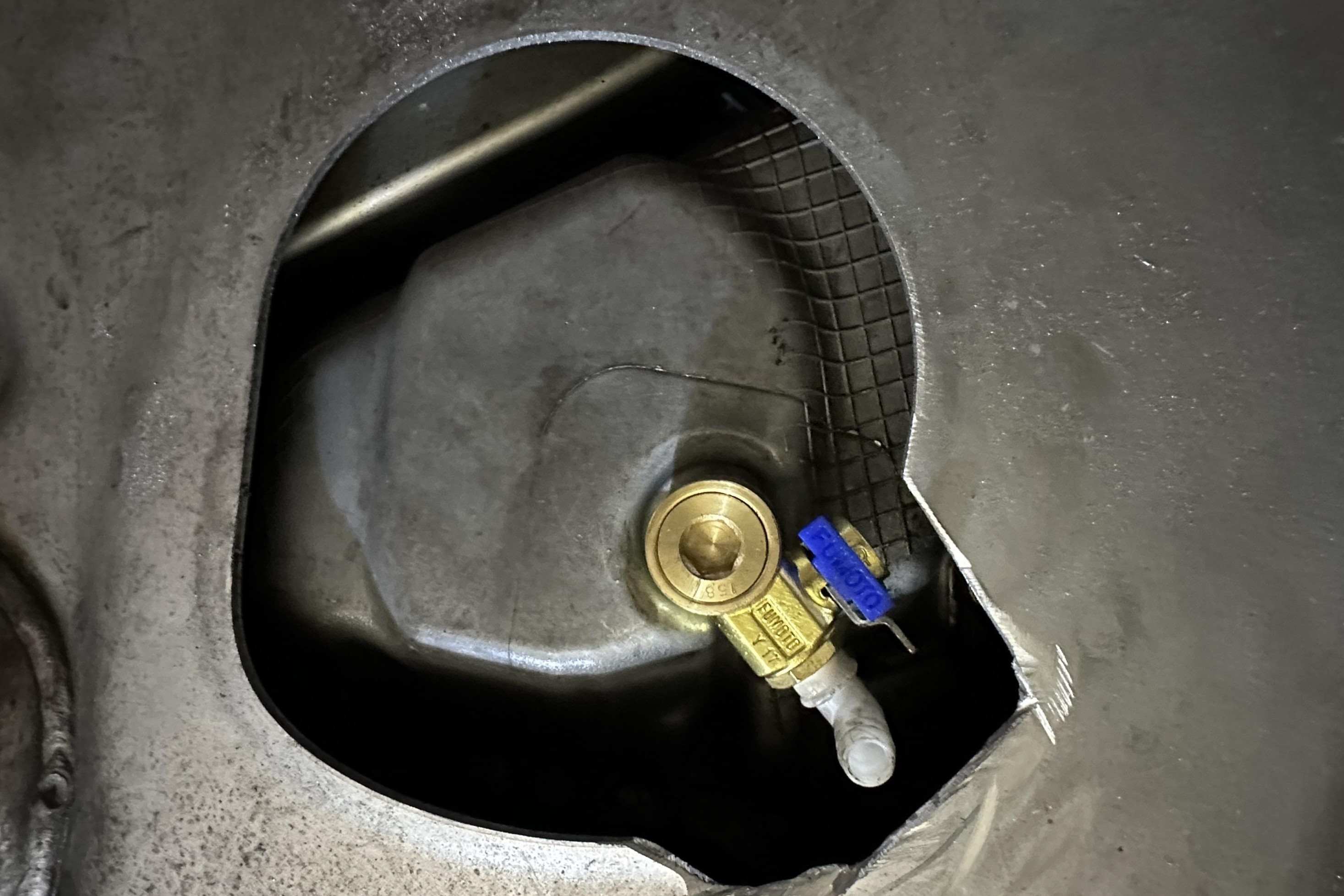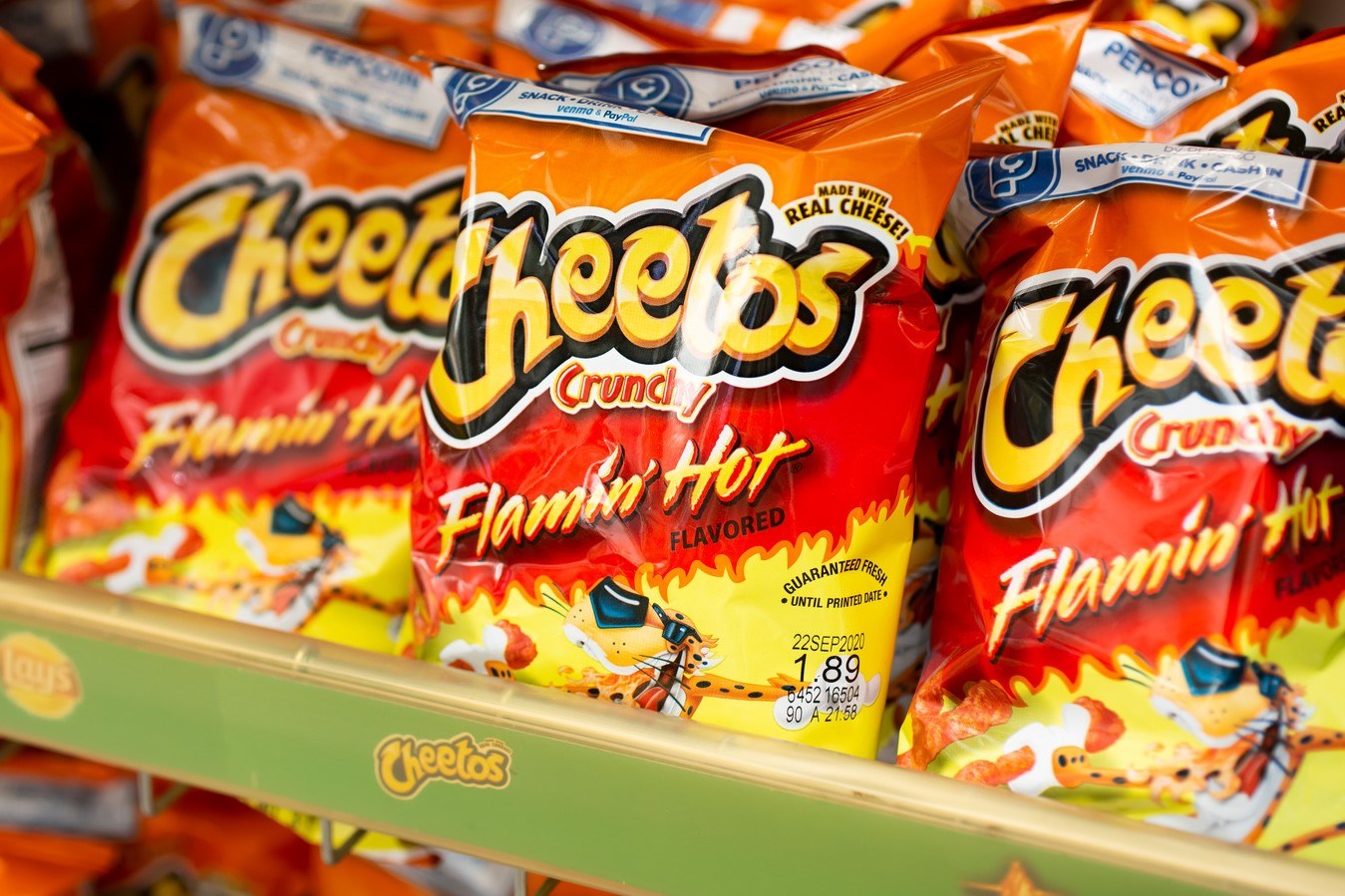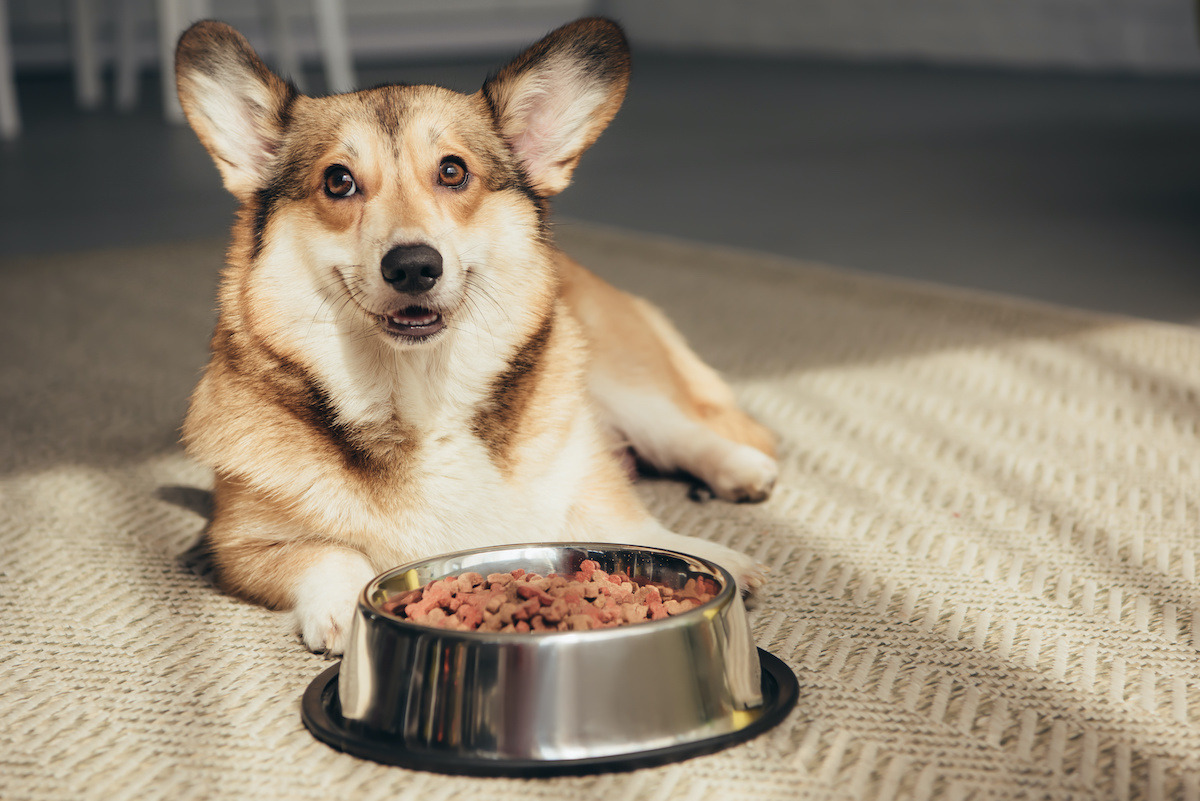Home>Pets & Animals>Shocking Consequences: Dog Devours Flaming Hot Cheetos


Pets & Animals
Shocking Consequences: Dog Devours Flaming Hot Cheetos
Published: February 20, 2024
Discover the shocking aftermath when a dog indulges in Flaming Hot Cheetos. Learn about the potential risks and how to keep pets safe. Explore more on pets and animals.
(Many of the links in this article redirect to a specific reviewed product. Your purchase of these products through affiliate links helps to generate commission for Noodls.com, at no extra cost. Learn more)
Table of Contents
Introduction
Dogs are known for their curious nature and their tendency to explore the world through their senses, including taste. As a result, they may occasionally come across human foods that are not suitable for their consumption. One such example is spicy snacks, such as Flaming Hot Cheetos, which can have shocking consequences if ingested by dogs.
The allure of spicy snacks, with their vibrant colors and tantalizing aroma, may lead to a dog's curiosity getting the better of them. However, what may seem like an innocent indulgence can quickly turn into a distressing situation for both the dog and its owner. The consumption of spicy snacks by dogs can lead to a range of health issues, some of which can have serious implications for the animal's well-being.
In this article, we will delve into the potential dangers of spicy snacks for dogs, exploring the symptoms of spicy food poisoning, the necessary treatment, and crucial preventive measures. By understanding the risks associated with spicy food consumption, dog owners can take proactive steps to safeguard their furry companions from unnecessary harm.
The Dangers of Spicy Snacks for Dogs
Spicy snacks, such as Flaming Hot Cheetos, pose significant dangers to dogs when ingested. These snacks contain ingredients like chili powder, paprika, and other spices that can wreak havoc on a dog's digestive system. The primary concern lies in the presence of capsaicin, the compound responsible for the spicy heat in peppers, which can cause severe discomfort and adverse reactions in dogs.
When a dog consumes spicy snacks, the capsaicin can lead to gastrointestinal distress, including stomach pain, nausea, vomiting, and diarrhea. These symptoms can be distressing for the dog and may also cause dehydration and electrolyte imbalances. In severe cases, ingestion of spicy snacks can result in inflammation of the digestive tract, leading to more serious complications.
Moreover, the high levels of salt and artificial flavorings in spicy snacks can also be harmful to dogs. Excessive salt intake can lead to sodium ion poisoning, causing symptoms such as excessive thirst, urination, and in severe cases, tremors, seizures, and even death. The artificial flavorings and preservatives in these snacks can further exacerbate the risks, potentially leading to allergic reactions and other adverse health effects in dogs.
In addition to the immediate health concerns, the consumption of spicy snacks can also have long-term implications for a dog's well-being. Chronic exposure to spicy foods can disrupt the natural balance of a dog's digestive system, leading to ongoing gastrointestinal issues and potential damage to the stomach lining.
It's important for dog owners to recognize the severity of the dangers posed by spicy snacks and take proactive measures to prevent their pets from accessing such foods. By understanding the potential risks, pet owners can prioritize the health and safety of their furry companions, ensuring that they are not exposed to harmful substances that could jeopardize their well-being.
Symptoms of Spicy Food Poisoning in Dogs
When a dog consumes spicy snacks, the onset of symptoms of spicy food poisoning can vary depending on the quantity ingested and the individual dog's sensitivity to the ingredients. It's crucial for dog owners to be vigilant and recognize the signs of spicy food poisoning to seek prompt veterinary care. Here are the common symptoms to watch for:
-
Gastrointestinal Distress: The consumption of spicy snacks can lead to immediate gastrointestinal distress in dogs. Symptoms may include vomiting, diarrhea, and abdominal pain. Dogs may exhibit signs of discomfort, such as restlessness, pacing, or whining, indicating the distress they are experiencing.
-
Excessive Drooling: Dogs suffering from spicy food poisoning may experience excessive drooling or hypersalivation. This can be a result of the irritation caused by the spicy ingredients, leading to discomfort and an increased production of saliva.
-
Pawing at the Mouth: Due to the burning sensation caused by the spicy snacks, dogs may paw at their mouths or rub their faces against surfaces in an attempt to alleviate the discomfort. This behavior is a clear indicator of the irritation and pain they are experiencing.
-
Lethargy: Dogs affected by spicy food poisoning may display signs of lethargy or weakness. They may appear unusually tired, lack energy, and show disinterest in activities they typically enjoy. Lethargy is a common symptom of various types of poisoning in dogs and should be taken seriously.
-
Increased Thirst: The consumption of spicy snacks can lead to dehydration in dogs, prompting an increase in thirst and water consumption. This is the body's natural response to restore fluid balance, and dog owners should monitor their pet's drinking habits for any significant changes.
-
Agitation and Discomfort: Dogs may exhibit signs of agitation, restlessness, or discomfort after consuming spicy snacks. They may pace, pant excessively, or exhibit signs of distress, indicating their discomfort and the need for immediate attention.
-
Vomiting and Diarrhea: These are common symptoms of spicy food poisoning in dogs. The vomit or diarrhea may contain undigested food, mucus, or blood, signaling the severity of the gastrointestinal irritation caused by the spicy ingredients.
It's important to note that the severity of symptoms can escalate rapidly, especially in cases of excessive consumption or if the dog has underlying health conditions. Therefore, any suspicion of spicy food poisoning should prompt immediate veterinary evaluation to mitigate the potential risks and ensure the well-being of the affected dog.
Treatment for Spicy Food Poisoning in Dogs
When a dog experiences spicy food poisoning, prompt and appropriate treatment is essential to alleviate their discomfort and address any potential health complications. The following steps outline the recommended course of action for treating spicy food poisoning in dogs:
1. Immediate Removal of Spicy Snacks
The first and most crucial step in treating spicy food poisoning in dogs is to prevent further ingestion of the offending substance. If the dog is still in proximity to the spicy snacks, they should be removed from the environment to eliminate the risk of continued exposure.
2. Contacting a Veterinarian
Upon suspecting or confirming that a dog has consumed spicy snacks, it is imperative to contact a veterinarian immediately. The veterinarian can provide guidance over the phone and may recommend bringing the dog in for an evaluation, depending on the severity of the symptoms and the quantity of spicy snacks ingested.
3. Assessment and Supportive Care
At the veterinary clinic, the dog will undergo a thorough assessment to evaluate their condition. The veterinarian will examine the dog's vital signs, assess their hydration status, and may perform diagnostic tests to gauge the extent of gastrointestinal irritation and any potential complications.
4. Symptomatic Treatment
Depending on the symptoms and severity of the dog's condition, the veterinarian may administer symptomatic treatment to address specific issues. This may include medications to alleviate nausea, vomiting, and discomfort, as well as interventions to manage dehydration and electrolyte imbalances.
5. Monitoring and Observation
Following initial treatment, the dog will be closely monitored to track their response and ensure that their condition stabilizes. Monitoring may involve assessing vital signs, observing for changes in symptoms, and providing supportive care to promote the dog's recovery.
6. Dietary Management
As the dog recuperates from spicy food poisoning, the veterinarian may recommend dietary adjustments to ease the digestive burden and promote healing. This may involve temporarily transitioning the dog to a bland diet to minimize gastrointestinal irritation and facilitate recovery.
7. Follow-Up Care
After the acute phase of treatment, the veterinarian may provide guidance on ongoing care and monitoring at home. They may recommend follow-up appointments to assess the dog's progress and ensure that they have fully recovered from the effects of spicy food poisoning.
8. Preventive Measures
In addition to treatment, the veterinarian may offer advice on preventing future incidents of spicy food poisoning. This may include educating the dog owner about the dangers of certain human foods, such as spicy snacks, and providing recommendations for safeguarding the dog from potential hazards.
By following these steps and seeking professional veterinary care, dog owners can ensure that their pets receive the necessary treatment for spicy food poisoning, leading to a swift and successful recovery. It is crucial to prioritize the well-being of dogs and take proactive measures to mitigate the risks associated with spicy food consumption.
Preventing Spicy Food Poisoning in Dogs
Preventing spicy food poisoning in dogs requires a proactive approach to safeguarding their well-being and minimizing the risk of exposure to harmful substances. As responsible pet owners, it is essential to implement preventive measures to create a safe environment for our furry companions. Here are effective strategies to prevent spicy food poisoning in dogs:
1. Education and Awareness
Educating oneself about the potential dangers of spicy foods for dogs is the first step in prevention. Understanding which human foods are harmful to dogs, including spicy snacks like Flaming Hot Cheetos, empowers pet owners to make informed decisions and take necessary precautions.
2. Secure Food Storage
Storing spicy snacks and other human foods out of reach of dogs is crucial. Cabinets, pantries, and refrigerators should be secured with pet-proof latches or placed in areas inaccessible to dogs. Additionally, waste bins should have secure lids to prevent dogs from scavenging potentially harmful food items.
3. Clear Communication
Communicating with family members and visitors about the importance of not feeding spicy snacks to dogs is essential. Clear and consistent communication can prevent accidental feeding of inappropriate foods to dogs, reducing the risk of spicy food poisoning.
4. Supervision and Vigilance
Supervising dogs during meal preparation, snacking, and social gatherings can prevent unauthorized access to spicy foods. Vigilance is key, especially when young children are present, as they may unknowingly offer spicy snacks to dogs out of curiosity or affection.
5. Alternative Dog-Friendly Treats
Providing a variety of dog-friendly treats and chews can divert a dog's attention from seeking out human foods. Offering safe and appealing alternatives can satisfy their cravings and reduce the likelihood of them seeking out spicy snacks.
6. Training and Reinforcement
Training dogs to respond to commands such as "leave it" and "drop it" can be invaluable in preventing them from consuming inappropriate foods. Consistent reinforcement of these commands reinforces boundaries and helps deter dogs from approaching or ingesting spicy snacks.
7. Regular Veterinary Check-ups
Routine veterinary check-ups enable early detection of any underlying health issues that may predispose dogs to seeking out unusual food items. Maintaining a dog's overall health and well-being can reduce the likelihood of them exhibiting abnormal behaviors, including consuming spicy snacks.
8. Emergency Preparedness
Being prepared for potential emergencies, including accidental ingestion of spicy foods, is essential. Having the contact information for a veterinarian and understanding the steps to take in case of poisoning can expedite the response and minimize the impact on the dog's health.
By implementing these preventive measures, dog owners can create a safe and nurturing environment for their pets, reducing the risk of spicy food poisoning and other potential hazards. Prioritizing the well-being of dogs through education, awareness, and proactive measures is fundamental to fostering a healthy and harmonious relationship between pets and their owners.
Conclusion
In conclusion, the consumption of spicy snacks, such as Flaming Hot Cheetos, by dogs can have alarming consequences, posing significant risks to their health and well-being. The presence of capsaicin and other spicy ingredients in these snacks can lead to gastrointestinal distress, dehydration, and potential long-term complications for dogs. The symptoms of spicy food poisoning, including vomiting, diarrhea, excessive drooling, and lethargy, underscore the severity of the dangers associated with these human foods when ingested by dogs.
It is imperative for dog owners to recognize the potential risks and take proactive measures to prevent their pets from accessing spicy snacks. By securing food storage, educating family members and visitors, and providing alternative dog-friendly treats, pet owners can create a safe environment that minimizes the likelihood of spicy food poisoning. Additionally, training and reinforcement, regular veterinary check-ups, and emergency preparedness play crucial roles in mitigating the risks and promoting the well-being of dogs.
In the event of spicy food poisoning, prompt veterinary care is essential to address the dog's symptoms and facilitate their recovery. Treatment may involve symptomatic care, dietary management, and ongoing monitoring to ensure the dog's health and comfort. By following the recommended treatment steps and seeking professional veterinary guidance, dog owners can effectively manage the consequences of spicy food poisoning and support their pets through the recovery process.
Ultimately, the well-being of dogs hinges on the responsible actions and decisions of their owners. By prioritizing education, awareness, and preventive measures, dog owners can create a safe and nurturing environment that safeguards their pets from the potential dangers of spicy snacks and other harmful substances. Through these efforts, dogs can thrive in a supportive and secure environment, free from the risks of spicy food poisoning and other preventable health hazards.










